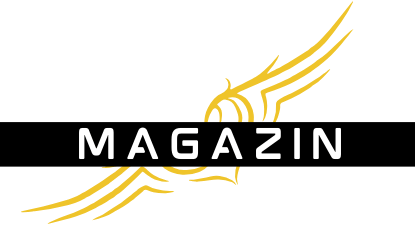In an era driven by technology, the landscape of manufacturing is undergoing a seismic shift. We stand at the cusp of a new age where automation and robotics intertwine, pushing the boundaries of industrial productivity to new heights. As we delve into this topic, consider the possibilities that lie ahead. Imagine seamless production lines, where robots execute tasks with precision and consistency beyond human capabilities. The future is not distant; it’s happening right now, transforming how industries operate globally. Join us on this journey as we explore how these powerful tools are revolutionizing modern industries, enhancing efficiency and safety, and propelling an era of unprecedented growth.
Revolutionizing Industrial Efficiency
Automation and robotics are redefining efficiency in ways once thought impossible. Gone are the days where manual labor dominated the factory floor. Today, robotic systems power the heart of industrial operations, executing tasks with unrivaled speed and accuracy. By minimizing human intervention, these systems significantly reduce operational errors and enhance product quality.
Imagine an assembly line that never tires, never errs, and works round the clock. This is the reality that automation brings to manufacturing. By employing advanced robotic systems, industries can maximize their throughput while minimizing waste. These robots are equipped with sensors and algorithms, allowing them to adapt to changing situations and maintain optimal performance.
But that’s not all—automation also plays a vital role in data collection and analysis. As these systems work, they gather extensive data that can be analyzed to further refine processes, anticipate potential bottlenecks, and predict maintenance needs. This data-driven approach is a game-changer, driving continual improvement and ensuring production remains at its peak.
By leveraging these state-of-the-art technologies, industries can achieve unparalleled levels of productivity. This isn’t just about increased output; it’s about smart, automated solutions that build a resilient and adaptable operational framework for the future.
Enhancing Safety and Productivity
Safety has always been a paramount concern in industrial settings, and automation is paving the way for safer workplaces. Robots are taking over dangerous tasks, significantly reducing the risk of injury to human workers. With sensors and safety protocols integrated into their design, these robotic assistants can detect obstacles and adapt their operations to prevent accidents.
Moreover, the implementation of automation allows human workers to focus on higher-value tasks that require creativity and problem-solving skills. This not only enhances overall productivity but also fosters job satisfaction as individuals engage in more meaningful work. The collaboration between humans and robots—often referred to as cobots—creates a balanced environment where safety and efficiency coexist harmoniously.
Beyond physical safety, automation ensures operational consistency, reducing the likelihood of errors that can compromise product integrity. By maintaining uniformity in production, businesses can meet stringent quality standards and enhance consumer trust. In the long run, this translates to sustained growth and a competitive edge in the market.
As we continue to harness the power of robotics, it becomes evident that the future of work will be characterized by enhanced safety and productivity. This synergy between human and machine is set to usher in a new era of innovation and growth, driven by the relentless pursuit of excellence. {image_content}
Data-Driven Decision Making
In today’s industrial landscape, data is not just a byproduct of operations—it’s a strategic asset. Automation and robotics are amplifying our ability to capture and analyze vast amounts of data, providing insights that drive informed decision-making.
Every action undertaken by a robot is recorded, creating a comprehensive database of operational metrics. By examining this data, businesses can identify patterns, uncover inefficiencies, and optimize their processes for maximum efficiency. This data-driven approach not only enhances current operations but also enables predictive analytics, allowing companies to anticipate and prepare for future challenges.
Moreover, data plays a critical role in safety management. By continuously monitoring machine performance and environmental conditions, potential hazards can be detected and addressed proactively. This foresight is crucial in preventing accidents and ensuring a safe working environment.
The integration of data analytics with robotic systems is a testament to the evolving nature of technology. As industries continue to embrace this transformative approach, we can expect a future where every decision is backed by empirical evidence, leading to a more efficient, safe, and profitable business landscape.
The Future of Work: A Collaborative Vision
As we look to the future, it’s clear that automation and robotics will continue to play a transformative role in the workplace. However, this doesn’t spell the end for human involvement; rather, it marks the beginning of a collaborative era where humans and robots work side by side.
This symbiotic relationship allows us to leverage the strengths of both parties. While robots excel in executing repetitive and precise tasks, humans bring creativity, intuition, and complex problem-solving skills to the table. Together, they form a formidable team that can tackle challenges with unparalleled efficiency.
Moreover, the adoption of automation leads to the creation of new roles within organizations. As technology evolves, so too will the demand for skilled professionals who can design, maintain, and optimize these robotic systems. This dynamic shift in the labor market presents opportunities for career growth and advancement.
Education and training will be pivotal in preparing the workforce for this new reality. By equipping individuals with the necessary skills and knowledge, we can ensure that they are well-positioned to thrive in a technologically driven world.
As we embrace this collaborative vision, it becomes evident that the future of work is not just about machines replacing humans—it’s about forging partnerships that amplify the capabilities of both. Together, we can achieve greater heights in industrial productivity and innovation.
In the realm of manufacturing, automation and robotics are the harbingers of change, steering industries towards a future defined by precision, safety, and growth. As we continue to integrate these technologies into our operations, we must remain committed to fostering a harmonious relationship between humans and machines.
The journey is just beginning, and the potential is boundless. By embracing data-driven decision-making, enhancing safety protocols, and fostering a collaborative work environment, we can redefine the industrial paradigm and unlock new avenues of productivity and innovation.
The power of robotics lies not only in its ability to perform tasks with unmatched precision but also in its capacity to complement human ingenuity. Together, as partners in progress, we have the opportunity to shape a future where technology and humanity coexist, creating a world that is more efficient, sustainable, and prosperous.
FAQ
What are the key advantages of using automation in the workplace?
Automation in the workplace leads to increased productivity, consistent quality, and reduced error rates. It allows for the efficient handling of repetitive tasks, freeing up human resources for more strategic roles. Additionally, automation can operate continuously, maximizing uptime and output.
How does robotics enhance precision in industrial applications?
Robotics boosts precision by utilizing advanced sensors and algorithms to perform tasks with high accuracy. They can consistently replicate processes without human error, ensuring that each operation meets exact specifications. This precision is crucial in industries where even minor deviations can lead to significant issues.
Are there specific industries that benefit most from automation and robotics?
While nearly all industries can benefit from automation and robotics, sectors like manufacturing, healthcare, and logistics have seen significant gains. In manufacturing, automation streamlines production lines, while in healthcare, it aids in precision surgeries and patient care. In logistics, robotics optimize inventory management and order fulfillment.
What challenges do companies face when integrating automation and robotics?
Companies may encounter challenges such as high initial costs, the need for skilled personnel to manage and maintain systems, and potential job displacement concerns. Additionally, integrating new technologies with existing systems can require significant time and planning.
How do automation and robotics impact the future workforce?
Automation and robotics are reshaping the workforce by creating new job opportunities in technology development, maintenance, and oversight. While some traditional roles may be phased out, there is a growing demand for skilled workers who can design, implement, and manage automated systems. Emphasizing training in robotics and automation can prepare the workforce for these evolving roles.

